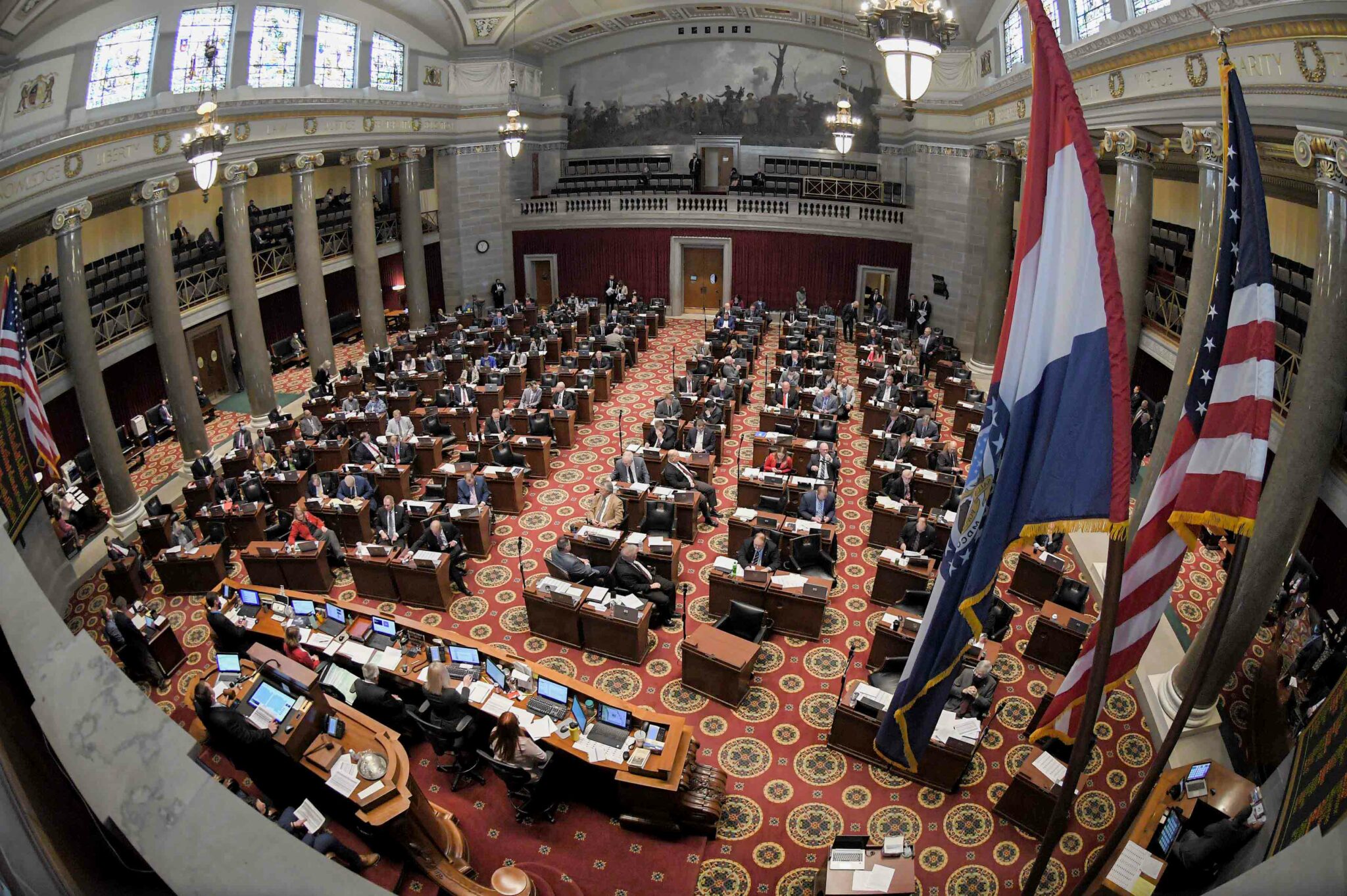Will kids count? Panels debate who to include in new Missouri House, Senate districts

Before slavery ended in 1865, large numbers of Missourians didn’t count in the population base used to allocate the seats in the General Assembly.
In the 1821 Missouri Constitution, only “free white male inhabitants” counted in the distribution of Missouri House seats, leaving out white women and all Blacks, free or enslaved. A change in 1849 added white women to the base.
The entire population has been used since the Constitution of 1865.
But as the once-a-decade process of redrawing political district boundaries gets under way following the 2020 Census, there’s some concern that could change.
As the two 20-member commissions work to design state House and Senate districts that will be used for the next five legislative elections, a question has come up repeatedly: Whether to use the entire population, or just citizens old enough to vote, in setting district boundaries.
This question was the subject of the only substantive vote taken so far by either commission. And while Republicans on the commissions insist that leaving children out is not on the table, Democrats remain concerned it could still be an option.
And that has put public interest watchdogs on edge.
When former state auditor Susan Montee, a Democratic redistricting commissioner, tried to get her colleagues on the Senate Independent Bipartisan Citizens Commission to go on record in favor of including people under 18 in districts’ population count, she failed on a straight party line vote.
The eight Democrats present all voted for Montee’s motion, and the 10 Republicans were opposed.
The question came up again during an Oct. 21 hearing of the House Independent Bipartisan Redistricting Commission in St. Louis. Travis Crum, an associate professor of law at Washington University, testified that excluding children and non-citizens who could not vote would have its biggest impact on minorities.
More than 50% of Hispanic and Asian residents would not be included, along with 28% of Black Missourians and 21% of whites, he said.
“Our recent study by the Brennan Center for Justice found that this would skew political power to wider and more rural areas, particularly hurting the St. Louis suburbs and the Kansas City metro region,” Crum said.
Approximately 22% of Missouri’s residents are under 18, data from the 2020 Census shows. There is no firm data on citizenship, but the Census Bureau, using the 2019 American Community Survey, estimated last year that 24.2% of residents are non-citizens or too young to vote.
The question of who will be included arose because the Republican-dominated state legislature rewrote the process for designing districts. The changes were put on the ballot as Amendment 3 and approved by voters in November.
Amendment 3 repealed the redistricting process mandated by an initiative passed two years earlier by a group called Clean Missouri. Along with other changes, lawmakers added a new phrase, never before used in the constitution, to guide the commissions.
Districts, the constitution states, “shall be drawn on the basis of one person, one vote.” Since that language was first proposed, it has raised concerns that new districts would not count non-citizens or children.
During the debate at the Springfield meeting, no Republican member of the Senate commission argued in favor of districts based on citizenship and age. Some said they were confused why it was even an issue.
“I apologize, but if we’re abiding by the constitution, and the constitution says that we’re abiding by the population, and the population numbers that we’ve been given include children, why is this even an issue?” asked Leann Green, a Republican from southeast Missouri.
Still, the issue remains, said Sean Nicholson, who directed Clean Missouri and is now monitoring the commissions as the director of Fair Maps Missouri.
“I remain confused why some of the commissioners won’t clarify that it isn’t part of the plan,” Nicholson said. “It is illegal, it is discriminatory, and at the end, we are going to have maps based on the total population.”
The Springfield vote on who to include in the population base wasn’t on the agenda, but Chairman Marc Ellinger, a Republican, allowed almost a half-hour of debate before turning to the only item on the agenda, public testimony.
Democratic Commissioner Mike Frame kicked off the discussion by proposing the commission endorse a statement that it would use total population as the basis for its plan. He said he was reacting to testimony during earlier hearings raising concerns that the maps would be based on the state’s population of voting-age citizens.
Using the entire population “is required by law and it’s the right thing to do, so our families and communities are fully represented from the new legislative districts,” Frame said.
Ellinger said he read the Constitution to require districts based on the total population, but he opposed Frame’s proposal. The phrase “one person, one vote,” is only used once, he said, and everywhere else, the constitution uses the word population to describe the starting point.
“It says population, population, population,” Ellinger said. “I guess to my, my thought, commissioner, I’d be happy to entertain a motion saying the commission will comply with the constitution and the laws of the state of Missouri.”
A close voice vote approved a motion from Republican Commissioner Chris Slinkard to substitute Ellinger’s statement for Frame’s proposal.
Then Montee asked to add a second sentence, that the base would include Missourians too young to vote.
“I’m just trying to stop any controversy for the public thinking that at some point, we’re going to say, hey, we’ve decided to draw the maps without children in them,” Montee said.
With the public hearings drawing to a close, the discussion of which population number to use will get more attention in the commissions’ work session.
The redistricting process was triggered by the delivery of census results from 2020. The commissions each have 20 members: two from each of the state’s eight Congressional Districts and four at-large members. They are nominated by their parties and chosen by the governor. Each commission’s map must be approved by 14 members, meaning neither party can force through a plan by a bare majority.
The commissions have until late January to complete their work.
Determining which areas would gain representation and which would lose clout under maps that exclude children from the count is fairly easy. Statewide, 22.4% of people counted in the 2020 census are under 18.
By county, the highest percentage of children is in Scotland County, where 29.8% of the people are under 18. Hickory County has the lowest percentage, with only 16.3% under 18.
St. Louis, which has enough people for exactly eight House districts under an apportionment based on the entire population, would have 8.4 seats if only adults are included. Other large population counties that would see increased representation are St. Louis, Boone and Greene counties.
The Kansas City metropolitan area would lose representation if children are excluded.
The census does not ask people their citizenship status and in June 2019, the U.S. Supreme Court blocked President Donald Trump’s administration from adding the question.
The court has made other decisions in the past decade, however, that leave open the question of whether districts based on citizenship and voting age are allowed, Crum said in an interview.
Crum was a law clerk for Justice Anthony Kennedy and retired Justice John Paul Stevens and this year he wrote an analysis titled “Deregulated Redistricting” that will be published in the Cornell Law Review.
The current apportionment, with districts of equal population, grew out of a landmark 1964 decisionoverturning Alabama’s system, which distributed representation based on county boundaries. It is also when the phrase “one person, one vote” became commonly used to describe districts of equal population.
“Legislators represent people, not trees or acres,” Chief Justice Earl Warren wrote in the majority opinion. “Legislators are elected by voters, not farms or cities or economic interests.”
In the past decade, the court overturned the Voting Rights Act restrictions on changes to election procedures in Southern states with a history of discrimination and declined to interfere with maps engineered to favor one political party, Crum wrote in his upcoming paper.
It has not addressed whether a state can use the population of citizens 18 and over as the basis for districts, Crum said.
The way he reads the Missouri Constitution, he said in an interview, he would expect the Missouri Supreme Court to reject a map that did not include the entire population.
“It is a separate question of whether the federal constitution would allow this,” Crum said. “That is a larger question. I think that is a much more complicated question, given the current composition of the Supreme Court.”
Federal courts would most likely defer to how state courts rule on any state constitutional questions, he said.
If the commissioners are listening to the testimony in the public hearings, they will not try to exclude children or non-citizens from the population base, Nicholson said.
“There was testimony over and over and over again,” he said, “ asking them to not do that.”
This story was a collaboration between The Missouri Independent and Missouri School of Journalism reporters Jonathan Jain, MJ Montgomery, Lianna Johnson and Jackson Valenti.
Miss Clipping Out Stories to Save for Later?
Click the Purchase Story button below to order a print of this story. We will print it for you on matte photo paper to keep forever.

